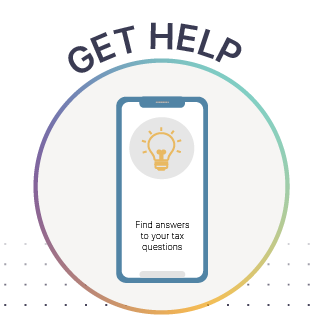Apply for an ITIN
The application — Form W-7, Application for IRS Individual Taxpayer Identification Number — asks details about why you need an ITIN and requires you to send in certain documents to prove your foreign status and identity.
Documentation needed
The documents must:
- Be current;
- Verify your identity (contain your name); and
- Support your claim of foreign status.
At least one document must contain your photograph. A current passport would meet all these requirements and is the only document you can submit on its own. Otherwise, you must send two documents.
The IRS has a long list of documents or combinations of documents that can show your status and identity. All are listed in the Form W-7 instructions.
All documents must be originals or certified copies. A certified copy is one that the original issuing agency provides, and certifies as an exact copy of the original, and contains an official stamped seal from the agency. Certifying Acceptance Agents and many Taxpayer Assistance Centers, discussed below, may also certify certain documents.
Many applicants have reported that IRS lost their passports or other valuable and hard-to-replace identification documents. Consider getting certified copies or using one of the application methods listed below, rather than mailing original identification documents to the IRS.
Exceptions to the rule requiring original documents or certified copies include:
- Military dependents and spouses;
- Nonresident aliens claiming tax treaty benefits and not filing a tax return; and
- Student and Exchange Visitor Program (SEVP) participants.
Each of these groups has specific requirements to qualify. See IRS.gov – ITIN Updated Procedures Frequently Asked Questions.
Submitting the application
Applying in person
You can apply for an ITIN by bringing your completed forms (Including the completed Form W-7) and documentation to any IRS Taxpayer Assistance Center office. The staff can help you complete an application and will submit it for processing.
Certain offices can verify passports and national identification cards and return them immediately. A list of these in-person Document Review Taxpayer Assistance Centers is available on IRS.gov. This allows you to avoid mailing your original documents, or certified copies, to the IRS.
Applying through an Acceptance Agent
Acceptance Agents (AAs) and Certifying Acceptance Agents (CAAs) can help you complete applications.
The advantage to using CAAs is that for primary and secondary applicants (like a spouse), the CAA can certify that your documents are original and make copies to send to the IRS. That way, you won’t have to mail your originals or copies certified by the issuing agency.
NOTE: CAAs are required to attach Form W-7 Certificate of Accuracy (COA) along with copies of original/certified copies of ID. For dependent applicants, CAAs can only authenticate the birth certificate and passport and attach copies to the COA. Additional documents for dependents must be original or copies certified by the issuing agency and sent to the ITIN Operations.
Applying by mail
If none of the in-person options work for you, you can still submit your application by mail. We strongly suggest that you get certified copies of all your documents instead of sending originals. We also suggest you send the application and documents by certified mail so you’ll have evidence of when you filed the application and where you sent it.
NOTE: Make sure you send your IRS Form W-7, Application for IRS Individual Taxpayer Identification Number, and your tax return to the address under Where to Apply in the Form W-7 instructions.
If you use the United States Postal Service:
Internal Revenue Service
ITIN Operation P.O. Box 149342
Austin, TX 78714-9342
If you use any private delivery services:
Internal Revenue Service ITIN Operation
Mail Stop 6090 AUSC, 3651 S Interregional, Hwy 35
Austin, TX 78741-0000
If you must send original documents, you can send the IRS a prepaid express envelope with your application to have them returned faster.
Thoroughly read the Form W-7 instructions. Certain identification documents have very specific requirements about what they must include (For example: School records and medical records). If your documents don’t meet these requirements, even if they’re official records or your only records, the IRS will reject your ITIN application.
Applicants outside the United States
Applicants outside the United States should call 267-941-1000 (not a toll-free call) or apply through a Certified Acceptance Agent. Additional information is available to tell you how to get an ITIN while abroad.









